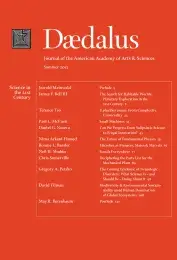Deciphering the Parts List for the Mechanical Plant
The development of inexpensive DNA sequencing technologies has revolutionized all aspects of biological research. The proliferation of plant genome sequences, in conjunction with the parallel development of robust tools for directed genetic manipulation, has given momentum and credibility to the goal of understanding several model plants as the sum of their parts. A broad inventory of the functions and interrelationships of the parts is currently under way, and the first steps toward computer models of processes have emerged. These approaches also provide a framework for the mechanistic basis of plant diversity. It is hoped that rapid progress in this endeavor will facilitate timely responses to expanding demand for food, feed, fiber, fuel, and ecosystem services in a period of climate change.
As the end of the previous millennium drew near, I accepted an invitation from a leading biomedical journal to summarize the major advances in knowledge of mechanistic plant biology during the preceding one hundred years.1 By mechanistic, I mean an intellectual framework that seeks to understand an organism as the sum of its parts: that is, in terms of the chemical structures and reactions that support life. One of the challenges of summarizing this vast topic was disentangling the many advances that revolutionized our understanding of plants nonspecifically–a rising tide of knowledge that lifted all boats. In spite of their long separation from a common ancestor, plants and animals (and fungi and bacteria) contain many proteins and genes with significant structural similarity. Thus, much of what is known about the function of plant proteins and genes, and the molecular and cellular processes they participate in, has been inferred from knowledge of the function of homologous genes in other types of organisms. In this sense, the study of plant biology is a subset of a broad campaign to understand all life forms. However, plants and animals are thought to have separated about 1.6 billion years ago from a common unicellular ancestor; so in addition to the fundamental differences in how they obtain energy, there are many interesting differences in how multicellularity and adaptive responses evolved.
. . .
